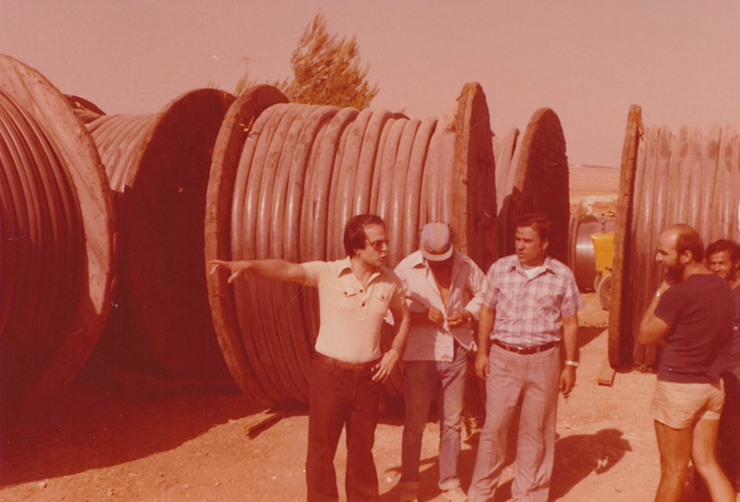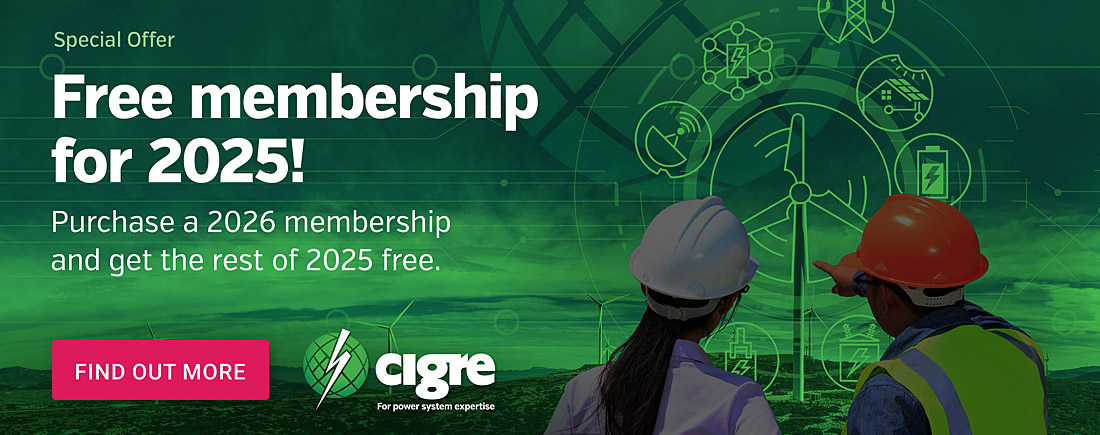Fifty Years Power On: A Tribute to the Next Generation
These days, half a century ago, I started my career as a young engineer with a well-known German transmission line contractor. The company was looking to expand internationally, and its CEO – Dr. Walter Bückner, a dedicated Cigrean – figured that a Greek might be just the right choice. Interestingly, my very first assignment wasn’t an overhead line, but an underground cable project in Aqaba/Jordan. You might even spot me in the old team photo below 😎.


President of CIGRE
Shortly thereafter, I embarked on what would become a lifelong journey – with CIGRE. What began as a professional engagement soon evolved into something much deeper. CIGRE has shaped not only my career but also my personal life. After all, it was at a CIGRE meeting in Paris in 1982 that I met my wife, Margarita. You could say my personal energy transition began early: high-voltage and built to last!
Looking back over five decades in the power industry, I realize how much the landscape – and the mission – has changed. When I entered the field, I was what we would now call a Next Generation Network (NGN) member: full of curiosity, eager to learn, and fortunate to build lines across many parts of the world. CIGRE played a crucial role in shaping my experience, not only through technical knowledge but also through the lasting friendships and global collaborations it fostered.
Today, young engineers face a different – but even more urgent – calling. What was once an exciting and well-compensated profession is increasingly becoming a mission: to help save our planet.
The path forward is clear. To address the climate crisis and mitigate its accelerating impacts, we must rapidly decarbonize our global economies through large-scale electrification. While variable renewable energy sources such as wind and solar will form the backbone of this transition, hydropower and nuclear energy must be more broadly recognized and accepted as critical complements. Both offer low-carbon, dispatchable generation that is essential for maintaining grid stability and ensuring supply security - particularly as the share of intermittent renewables increases.
Although hydropower is often geographically constrained and nuclear energy faces regulatory and societal challenges, their integration into national and regional energy strategies is vital. Numerous studies, including those by the International Energy Agency (IEA) and the Intergovernmental Panel on Climate Change (IPCC), highlight that a diverse energy mix – including hydro and nuclear – is the most cost-effective and reliable path to net-zero emissions.
Regardless of the mix, the energy transition will require unprecedented investments in grid infrastructure. According to the International Energy Agency (IEA), achieving net-zero emissions by 2050 will necessitate more than five million kilometres of high-voltage lines, including some 500000 km of HVDC – that’s more than the distance from Earth to the Moon!
This transformation cannot be achieved in silos. It will demand intensive collaboration across the entire value chain – and perhaps most critically, the dedication of the NGN generation. The energy transition will unfold during your careers; it is your commitment and leadership that will bring it to life.
That’s why I’m especially delighted to welcome and support new NGN members into the CIGRE community. Your participation is not only welcome – it is essential. I encourage you to engage fully with CIGRE’s global platform: to learn, contribute, network, and lead. In doing so, you’ll join a global movement of professionals striving to shape a sustainable, all-electric future.
Together, we can – and will – make a lasting impact.
Konstantin O. Papailiou
